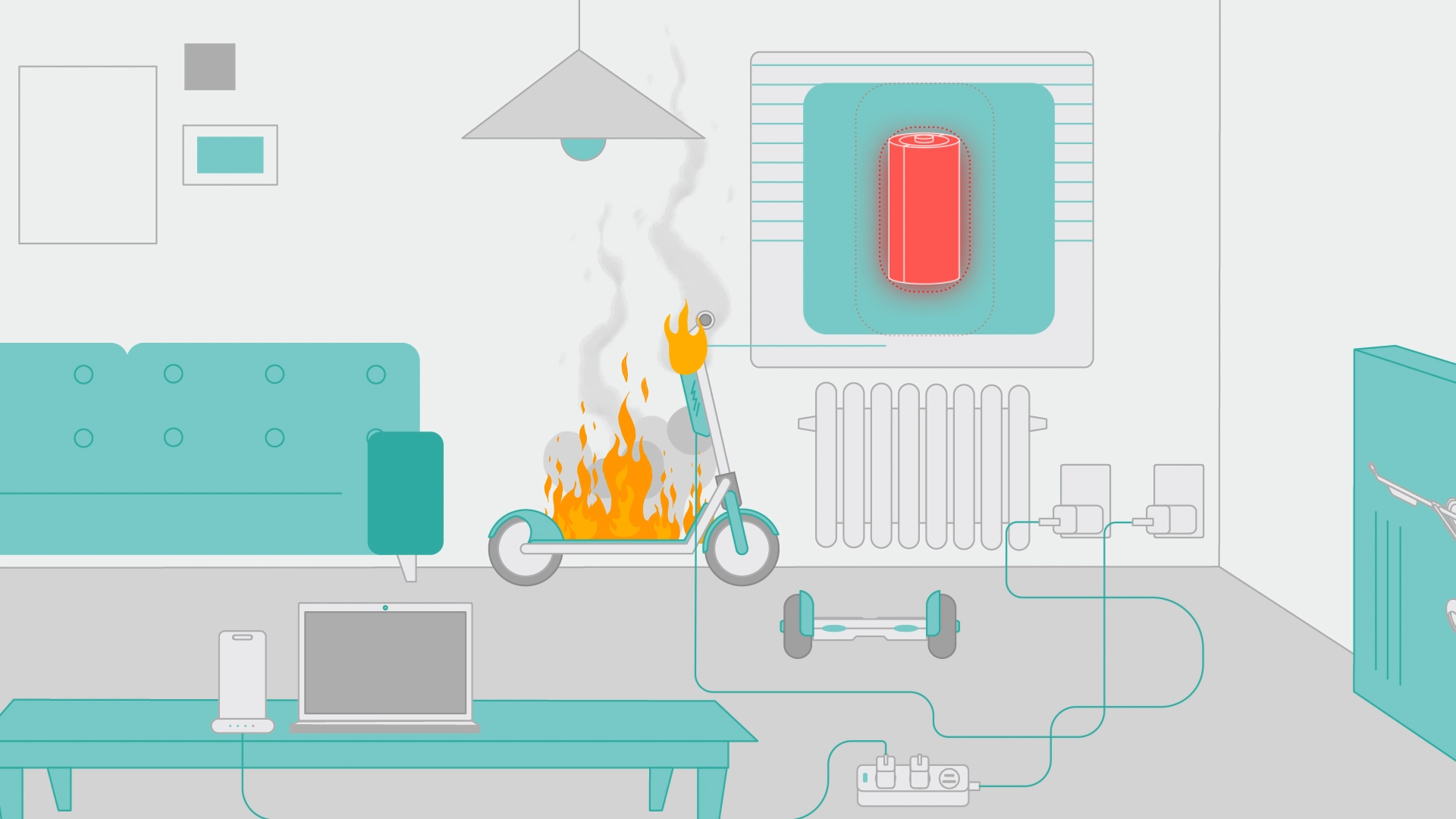
This is the box that the e-scooter was packaged in. Before arriving in this household, the scooter was shipped from a manufacturer to a store, and eventually transported to this home.
This room is full of nearby lithium-ion powered devices.
The electric scooter is plugged into the wall outlet.
With so many devices comes an array of chargers. How can you be certain the scooter was plugged in with the right one?
This radiator is a heat source for the room. Consider the amount of thermal energy that is coming from here and its proximity to the scooter.
Your turn
What do you think caused the thermal runaway in this scenario? How do you think this could have been prevented? What information do you have that supports these claims?
Build your argument using the clues in the scene below, the information you’ve collected in your exploration, and the knowledge you have gained about how products are designed to prevent thermal runaway.

